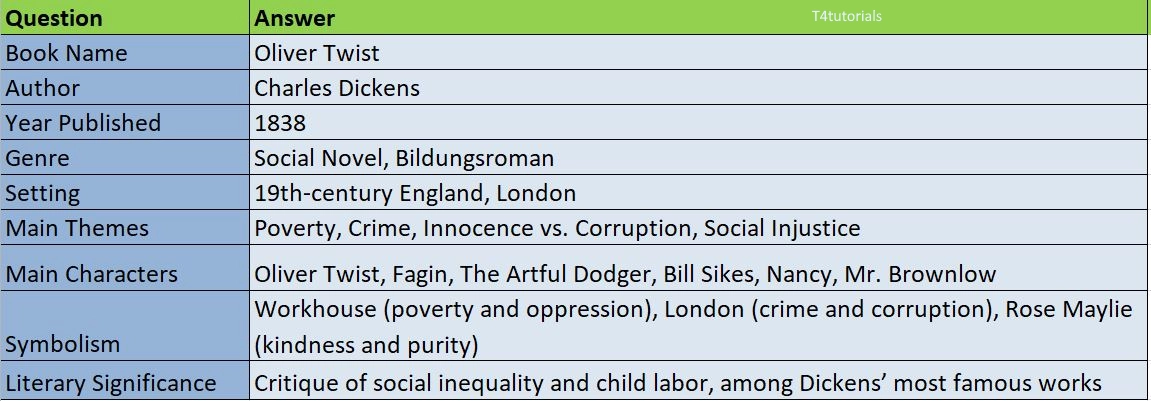Summary:
Oliver Twist by Charles Dickens is a social novel that highlights the hardships of orphans and the poor in 19th-century England. The story follows Oliver Twist, a young orphan born in a workhouse, who faces cruelty and hardship from an early age. After escaping to London, Oliver falls into the hands of Fagin, a criminal who runs a gang of child thieves. He befriends The Artful Dodger and is later falsely accused of theft. However, he is rescued by Mr. Brownlow, a kind gentleman who suspects Oliver has a noble background. As Oliver struggles between good and evil, he encounters Bill Sikes, a violent criminal, and Nancy, a kind-hearted woman who tries to protect him. Eventually, Oliver’s true parentage is revealed, and he finds safety with his relatives. The novel exposes the corrupt legal system, child labor, poverty, and crime in Victorian England while emphasizing themes of innocence, fate, and the struggle between good and evil.
10
Score: 0
Attempted: 0/10
Subscribe
| Question | Answer |
| Book Name | Oliver Twist |
| Author | Charles Dickens |
| Year Published | 1838 |
| Genre | Social Novel, Bildungsroman |
| Setting | 19th-century England, London |
| Main Themes | Poverty, Crime, Innocence vs. Corruption, Social Injustice |
| Main Characters | Oliver Twist, Fagin, The Artful Dodger, Bill Sikes, Nancy, Mr. Brownlow |
| Symbolism | Workhouse (poverty and oppression), London (crime and corruption), Rose Maylie (kindness and purity) |
| Literary Significance | Critique of social inequality and child labor, among Dickens’ most famous works |